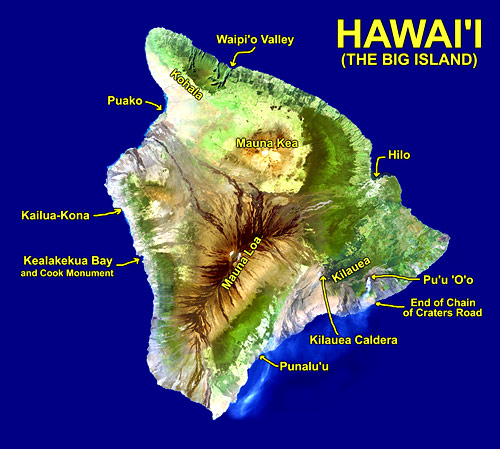

Mauna Kea is a (currently) dormant volcano. With an elevation of 13796 feet / 4205 metres above sea level it is the highest point on the Hawaiian islands. It just edges out Mauna Loa by 116 feet / 35 metres. To get to Mauna Kea you have to take the Saddle Road, so named because it travels through the 'saddle' between Mauna Loa and Mauna Kea. The major rental car companies won't permit driving here even though there his nothing particularly hazardous about it (except maybe the overhead artillery firing?). This seems to be because, being Hawaii's most isolated road, it would cost them too much for towing in the event of a breakdown. Even the route to the summit wasn't particularly bad except for five rough, unpaved miles after the visitor center. This section was apparently left this way to reduce the number of visitors to the summit. The final four miles were once again paved to keep the dust down in areas where the big telescopes were operating. We didn't think the Sentra could handle the challenge so we ditched it in Hilo. For 100 bucks we got a 4-Runner from what seemed to be the only company around that openly allowed their vehicles anywhere near Mauna Kea. We had it for 24 hours so we went up twice, sleeping overnight in the back of the truck at the base of Mauna Kea Summit Road. Kind of expensive but it was still worth it.
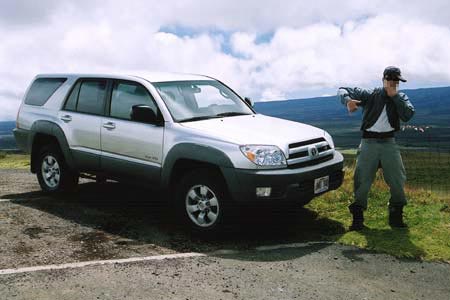 Awwww yeah! G gunna roll over M.K. in his phat truck (Note: this attire would not have been suitable on the military base) | 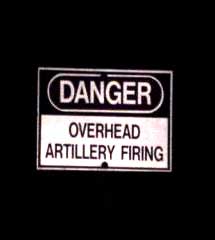 Reassuring sign on Saddle Road just West of Mauna Kea Access Road |

Mauna Kea from below - just looks like a big hill
On the way up the Saddle Road a number of pickup trucks passed by us with long, thin objects sticking up out of the back. When we reached the visitor center I figured out what these were -- shovels. The locals like to drive up and bring home loads of snow. I have no idea what they do with it. I did take advantage and fill the cooler though.
 "Yo! Snowball fight! Old temple. 3:00. Be there." | 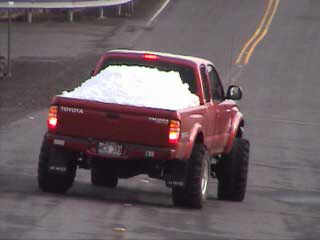 "Woo hoo! Snowball fight!!!" | 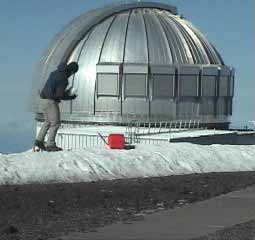 G fills the cooler |
The visitor center is located at the 9200' level. They recommend staying for at least half an hour to acclimatize before heading to the top. I don't think we even stayed that long because The Archivist was worried we would miss sunset. I ended up getting a little altitude sickness, with dizziness and a dull headache, but I managed to drive down without running off the road.
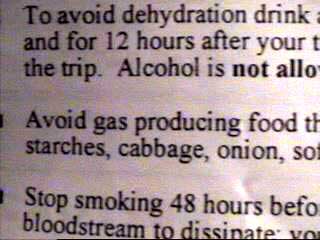 Visitor Center advice: Don't eat beans, you might explode | 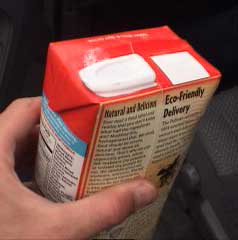 Drink box illustrates intestinal effects | 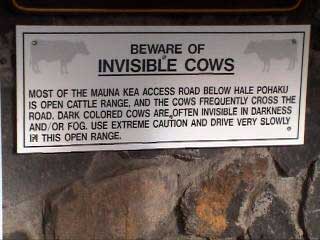 Warning at visitor center |
When we returned to the visitor center they had set up a number of telescopes for people to look through. I was able to capture some decent images by putting the video camera up to the eyepieces. At the lower altitude there were some problems with moisture buildup, which probably wouldn't have occurred the summit. A hair dryer solved this problem.
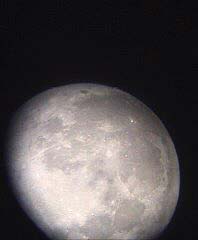 You know what | 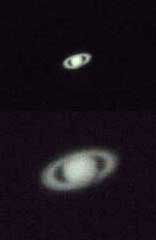 Saturn |  Jupiter and 4 moons |  Dude dries off the telescope |
The true summit of Mauna Kea, called Pu'u Wekiu, is a short hike from the road. It would have been an easy hike at any sane elevation but because there was 40% less oxygen to breathe it felt like I was moving in slow motion.
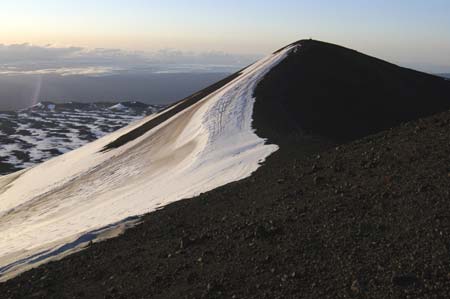 The true summit |  Translation: -3 C |  Start of trail |
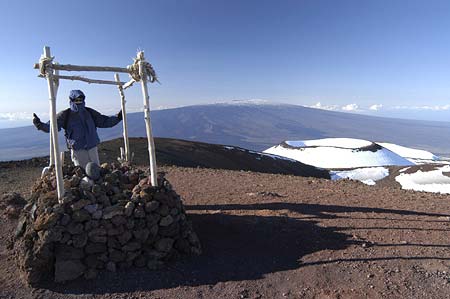 G at summit with Mauna Loa in background | 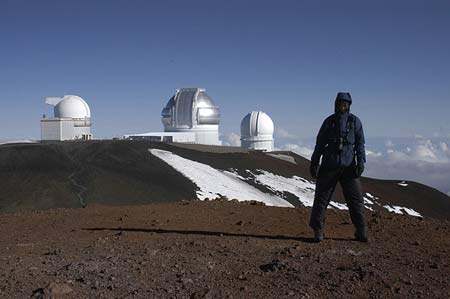 The Archivist in power stance at summit I think she would make a great guitarist |
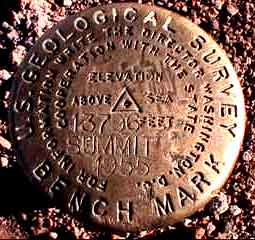 Summit marker | 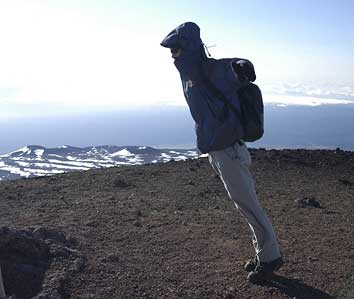 Translation: helluva windy |
There are 13 observatories at the top of Mauna Kea (webcams here). Conditions for astronomers here are about as good as you can get on earth because only 40% of the atmosphere, and 10% of the water vapour, exist at this elevation, and they average around 325 clear days a year. For an extreme comparison, Hilo, where we travelled from, averages only 36 clear days a year. We went into a couple of the observatories but there wasn't really too much to see. The W.M. Keck Observatory contains the world's two most powerful optical/infared telescopes, which can function together like a pair of binoculars. It also has a decent bathroom where I took a dump. It was still a little cold but it sure beat freezing my @ss off in the portable toilet outside.
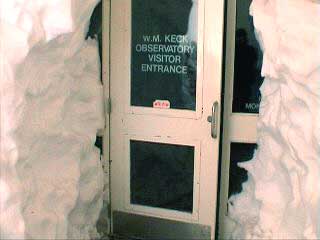 Visitor entrance |  I really wanted to use this | 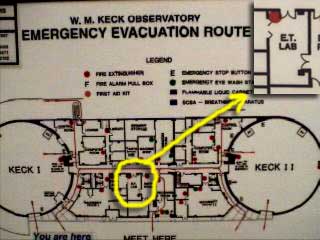 Keck floorplan |
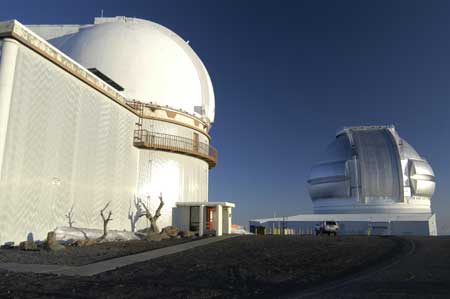 UH (left) and Gemini (right) observatories They even have the Gemini 'scope user manual online here | 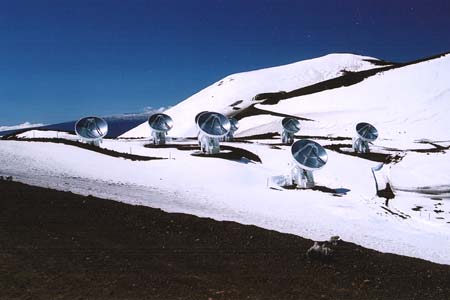 Submillimeter Array |
 This person drove up in a regular car Not sure why they brought their surfboard | 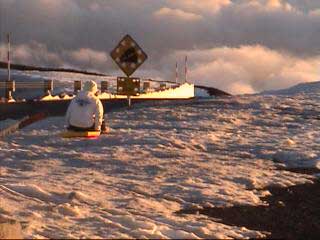 Japanese tourist tobogganing |  More jerks in shorts |
 Mauna Loa and visitor center below | 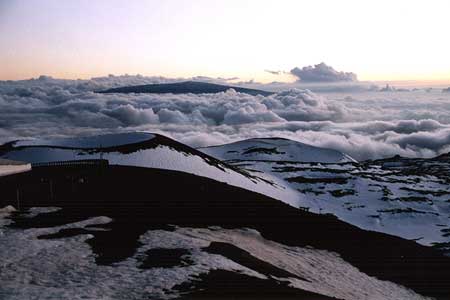 |
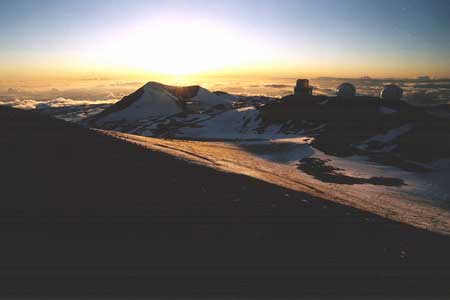 |  |
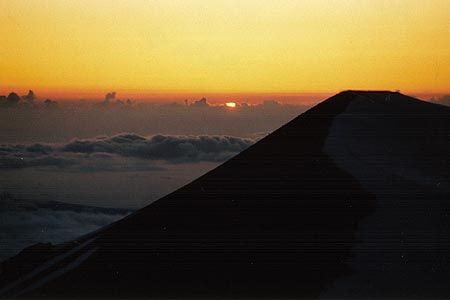 | 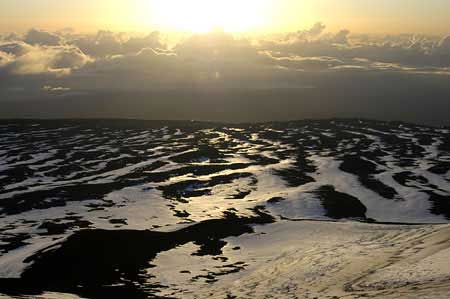 |
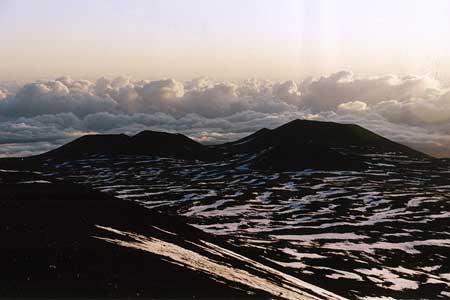 | 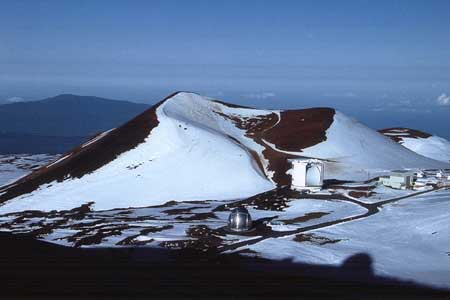 |
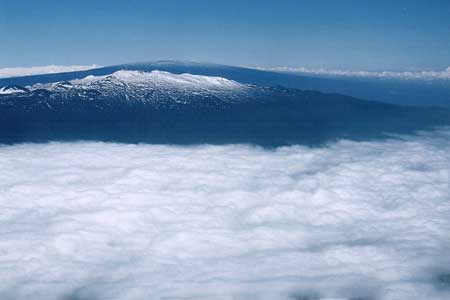 Mauna Kea (foreground) and Mauna Loa |  Closer view of Mauna Kea and observatories |

Scene at airport while waiting for flight back to mainland
| <<< Big Island Part 2 | Visual Stimulation Menu | Main |